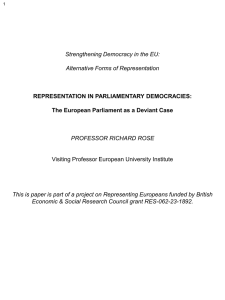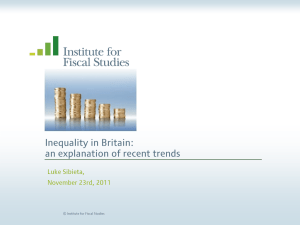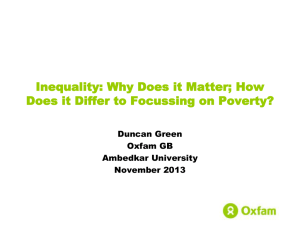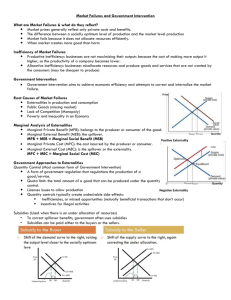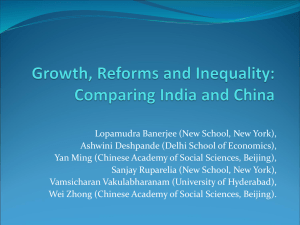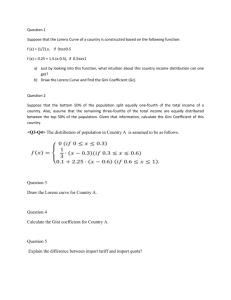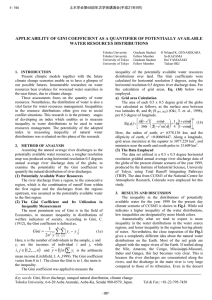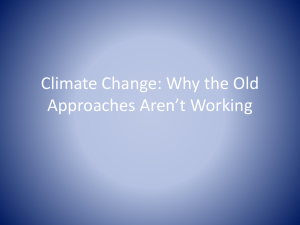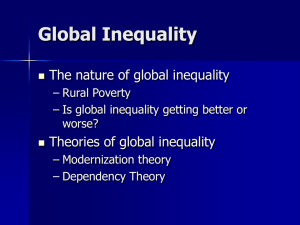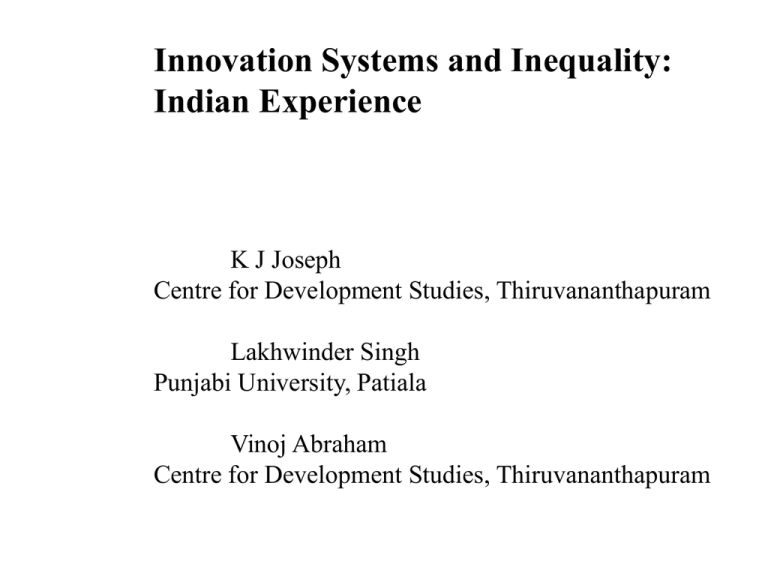
Innovation Systems and Inequality:
Indian Experience
K J Joseph
Centre for Development Studies, Thiruvananthapuram
Lakhwinder Singh
Punjabi University, Patiala
Vinoj Abraham
Centre for Development Studies, Thiruvananthapuram
Background
Globalisation and Inequality
Origin and Rise of Inequality
Structuralist-Evolutionary Approach
Development Strategy and Inequality
Co-evolution of NIS and
Inequality in India
• Phase I-Growth With Equity-Reducing injustice
• Import Substitution and Public Sector
• Technology-FDI-IPR Regime and Labour Related
Policies
• Asset Redistribution and Regulation of Monopoly
Capital Policies
• Fiscal, Monetary, Pricing and Freight Rate
Policies
• Food Procurement and Public Distribution System
• Finance Commission and Redistribution of
Revenue
Co-evolution of NIS and
Inequality in India
• Phase II: Market Oriented Growth for
Equity
• Dismantling Controls and Policies
• Widespread distress in the Rural Economy
• Return back of Equitable Considerations
• National Rural Employment Guarantee Act
Trends and Patterns of Interpersonal Inequality
in Consumption
31
28
25
22
19
16
13
10
7
4
60
50
40
30
20
10
0
1
Gini Coefficient
Graph 1: Rural-Urban Inequality Across Households in
India: 1951-2004
Years
Rural Gini Coefficient
Urban Gini Coefficient
Inequality of Wealth Across Households in India: 1961-62 to 2002-03.
(Figures are in Rs.)
Year
Rural
Urban
Average Assets
Gini Coefficient
Average Assets
1961-62
5287
0.6440
-
-
1971-72
11343
0.6564
-
-
1981-82
36089
0.6364
40566
0.7037
1991-92
107007
0.6207
144330
0.6805
2002-03
265606
0.6289
417158
0.6643
Source: Subramanian and Jayaraj (2006).
Gini Coefficient
Population Distribution According to Poverty Status
100%
80%
60%
40%
20%
0%
1993-94
Extremely poor and poor
1999-2000
Marginal and vulnerable
2004-05
Middle income
High income
Inter-Regional Disparities
Interstate disparitiies in per capita income
Gini Coefficient
0.25
0.2
0.15
Gini Coefficient
0.1
0.05
0
1960-61 1970-71 1980-81 1990-91 1998-99
Years
Inter-Regional Disparities
• History does matter-Colonial System of
Exploitation and Regional Structure
• Three Phases
• First Phase: Decline in Inter-regional disparities
till Mid-Sixties
• Second Phase: Rise in Inter-regional disparitiesGreen Revolution Period
• Third Phase- Liberalisation Period-Rising
Inequality-Service Sector driven growth and
disparities
Social Disparity
• Class Vs Social Categories Provided by the
Constitution
• SCs, STs and OBCs
• Education, Capability Building and Opportunities
• The rate of educational dropouts is much higher
for SCs, STs and OBCs.
• The rates of return on education for SCs/STs is
also very low
Gender Discrimination
• Adverse Sex Ratio- 933
• Discriminatory practices such female
infanticide, female foeticide and practice of
dowry
• Female literacy has improved but still
gender gap is 0.7
• Gender gap in wages is also very high
Access to Health
• Continuous improvements in Health Indicators,
but gini coefficient shows stagnation in the postliberalisation period
• Piling up of food stocks and persisting
malnutrition
• 40 per cent children suffering from severe
malnutrition
• 46 per cent children remained unvaccinated
• More than half the births take place without the
benefit of a skilled attendent
Economic Development and
Structural Heterogeneity
• Structural Transformation from agriculture
to service sector
• Dependence of workforce for livelihood
primarily remained on agriculture sector
• Employment opportunities in the informal
sector
• Informal employment in the formal sector
• Decline in employment elasticity.
Inter-sectoral Productivity Differentials
and their bearing on Inequality
Year
Primary
Secondar
y
Tertiary
Secondar
y
+
Tertiary
Kuznets’
index of
inequality
Secondar
y
+
Tertiary/
Primary
1950-51
0.73
1.57
1.88
1.76
39.94
2.41
1960-61
0.68
1.74
1.93
1.85
46.38
2.72
1970-71
0.60
2.00
2.10
2.06
58.09
3.43
1980-81
0.53
1.88
2.32
2.12
66.18
4.00
1990-91
0.44
2.35
2.19
2.26
77.29
5.14
1999-00
0.37
2.23
2.08
2.14
81.20
5.78
Source: Sivasubramonian (2000).
Regional Disparities in Competence Building
Institutions and Production
• 1300 Science and Technology Institutions have
been established
• 1400 R&D Units are functioning
• These are located in eight states-Viz. AP,
Karnataka, Kerala, TM, Maharashtra, Delhi, UP
and WB
• Public sector R&D is still more than 78 per cent
• Concentration of both public and private sector
R&D expenditure in the Engineering and
Technology.
Conclusions and Way Ahead
• Innovation System Remained Subservient to the
National Priorities and Goals
• Production structure shown dynamism and
inherently generated inequities
• Science and technology accentuated inequities
• Policy Instruments ensured to some extent the
control over the inequitable regime but upper
sections of society turned these instruments either
in their favour or subverting them into nonfunctional
• Social movements and inclusive growth: Return of
employment guarantee programme-Democratic
Polity and Inclusive growth

